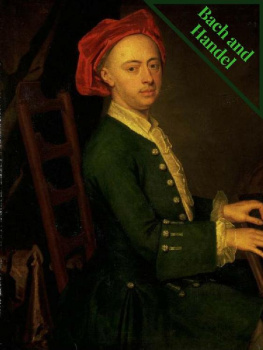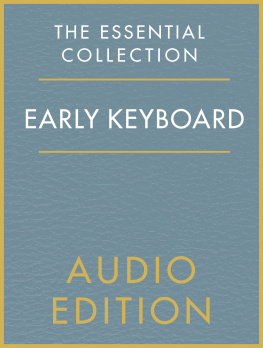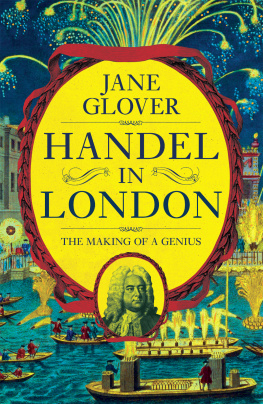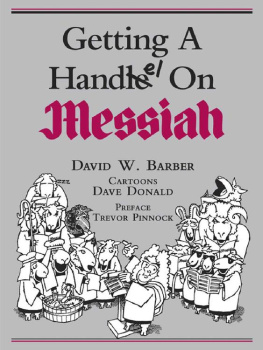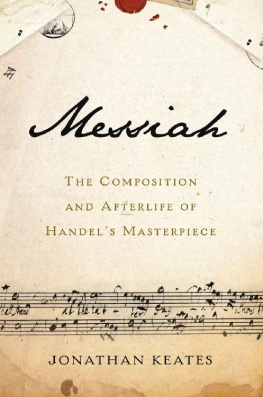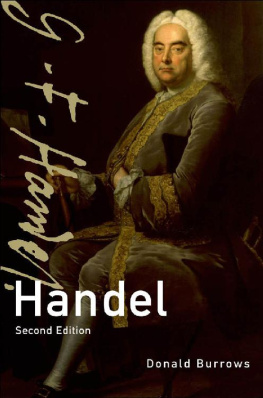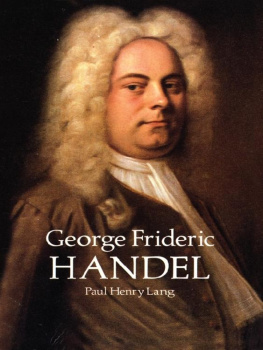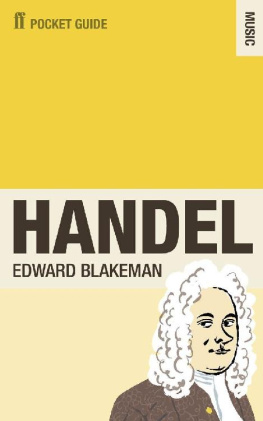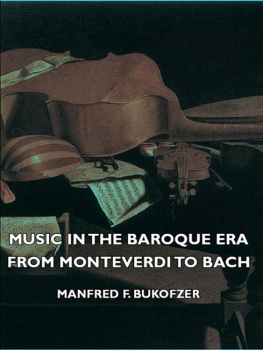The son of a poorurban musician, Johann Sebastian Bach was born the era of the gravest ruin ofGermany after a thirty-year war. , , (1618 1648 ). Destroyed cities, devastated fields, ruinedpeasant farms were the result of this war (1618 - 1648). , , . Theancestors of Bach were peasants, but one of them managed to get education andbecome a musician, initiating a whole pleiad of musicians. , . The fame of this family was such that atone time all city musicians were called "Bakhs". 1685 . , . Johann Sebastian was born on March 21, 1685 in Eisenach, where helived until the age of ten. , , , . Orphic, hemoved to Ordruf, to his elder brother Johann Christoph, the organist anddisciple of Pachelbel. . His brother became his first teacher on the clavier.
, , , , . At the ageof 15, not to be a burden to his brother, he moved to Luneburg, where heentered the local gymnasium and became a chorister in the choir, which giveshim the opportunity to feed himself. , , . At thattime in Lneburg organist was Georg Bhm, and Bach learned a lot fromhim, got acquainted with the works of Adam Reinken - the then famous organist. , . Twice Bach went to Hamburg to listen to his play. . He managed to listen to secular French music performed by anexcellent orchestra of the tiny duchy of Zellle. . The musicof Couperin "the great" had a great influence on the harpsichordstyle. , . At the age of 19, Bach became an organist in the town of Arnstadt,where he wrote the first surviving works.
, , . From here he walked 350 km on foot to hear in DtrichBuxtehude in Lbeck, which had a huge influence on Bach's work. , , , , 1685 . . It isinteresting that here he found himself almost simultaneously with Handel, hisbrilliant contemporary, born, like Bach in 1685. But both great musicians nevermet. 1708 . , . In 1708,Bach returned to Weimar, from where he traveled as a virtuoso on organ andharpsichord in the north of Germany.
1717 , , , , , , , , - . In 1717,after a conflict with the Duke and a month's arrest, he went on to serve inKeten, where he created a collection of Preludes and Fugue for the TemperedClavier, orchestral concerts, suites, sonatas, suites for violin and clavier,viola da-gamba and violin concerts.
1723 , , , . In 1723, in order to educate his sons, Bachmoved to Leipzig, entering the service as a cantor at the local gymnasium of St. . Foma.
, . This postwas considered honorable, and up to Bach it was occupied by a number ofoutstanding composers. , , 4- . Cantor was to teach pupils singing, Latin, writing music for thefour Leipzig churches. , 1729 . Inaddition, since 1729 Bach was the music director of the University of Leipzigand directed the student music society.
. In LeipzigBach wrote a huge number of works. , . You canplay it for a whole year, even if you perform it every day.
1740 , , , . By 1740, achieved the greatest fame, but began to lead the mostsecluded way of life, giving all his time to his highly talented children,whose fame later eclipsed the glory of his father. , , . The last years of his life Bach sufferedfrom eye disease, underwent surgery, blind. ,27 1750 . He died at the age of 65, July 27, 1750.
. The numberof Bach's works is very great. . They are divided into five groups.
(350). Themost extensive is the church cantata (350). , , . The second- large artistic religious compositions - passions, oratorios, solemn mass and4 incomplete masses.
. The third group is works for organ and harpsichord.
, , , . 4 groups - works for various instruments - violins, violas, flutes,lutes.
, . The last,fifth group includes works for orchestral composition.
, , , , , , . In theperson of Bach, a huge historical process ends, based, on the one hand, on theconnection of music with the cult, and on the other - on the powerfuldevelopment of everyday music - dance, folk songs, music with dramaticpresentation. . Both ofthese streams have merged in the work of Bach and make him the mostcomprehensive musician of the time.
, , . One can nothelp but be impressed by the ease of writing, his confidence, manifested by himin the most diverse areas of musical composition. , , , , . From elegant, simple dances to graceful vocal works, Bach alwaysdiscovers a complete mastery of style, an expressive melody with a brightlypulsing rhythm, a strictly logical modulation into an inexhaustible wealth ofharmony.
, . During his lifetime, Bach was appreciated mostly as a virtuosoperformer.
. What were the characteristic features of the performance ofkeyboards.
cantabile , . Primarilyinterested in Bach is melodious and expressive game - art cantabile, accordingto his own works. . It was not just Bach's idea. . It is found in all treatises of that time. : C antabile , , , . Johann Gottfried Walther - a pupil of Johann Bernhard Bach - writesin his "Dictionary: C antabile, refers to vocal or instrumentalcomposition, every voice that could easily be sung.
, : , - cantabile . Telemann said it is very important to be inspired by a man's voice:"Whatever the play does not play - vocal or instrumental - all it shouldbe cantabile.
cantabile , . Cantabileart - it is the right way to bring out the beauty of the melodies andindependence, its expressiveness. . It was theart of phrasing and singling out voices - individually or all together.
. Another important quality of the performer is accuracy and accuracy. , . To achieve this goal, it is necessary to observe all the rules thatare burdened by great masters. , . The toolshould talk, and make it speak well - it's really an art and a great talent.
, . The skillful harpsichordist had in his arsenal a rich palette ofcolors, which could be achieved only through a sophisticated and diversecarcass. , . In the era of Bach, the perfect performer was only one who hadmastered the art of carcass. . Contemporaries spoke enthusiastically about the Bach carcass. , - . Clarity andaccuracy, rhythm and ease made his game something completely unique. , , . Bach, despite his serious nature, was receptive to gaiety and grace.
, , : , , , . Those his plays, which were usually considered very difficult, werenothing to him: he played them with such perfection and ease that they seemedno more than simple melodies of bagpipes, all his fingers were developedequally and could convey the finest nuances.
: Today you will listen to such works of Bach:
, c - moll . "Introduction, Prelude and Fugue" from Partita c - moll.
, . I, , c -moll , . "Italianconcert" Part I, Pastorale, c - moll,
: as well as works of his contemporaries:
. .
. Life andcreative path. (1685-1759) (1685-1759)
. Baby andyoung.
, . Like mostgreat people of the past, Georg Friedrich Handel is from the bottom of theGerman society. ; Hisancestors were artisans; , - , ( , ) , . Handel's father, a barber-surgeon, served in various Europeanarmies (Swedish, Saxon) and settled in his hometown of Halle, achieved theposition of a court surgeon of the Duke of Saxony and by the time of his birthhe had achieved considerable material prosperity.
: , . The composer's mother was fit for her husband: he was not inferiorto him either in courageous energy, or in mental and physical health. , , , . They werepeople of strong burgher leaven and gave their son physical health, mentalbalance, a practical mind, fatigue-free working capacity.
. Attractionto music. . Employment with Zachau. 1865 . Georg Friedrich Hndel was born on February 23, 1865 in Halle. , , . From early childhood, his amazing musical abilities andextraordinary interest in everything connected with the world of sounds andmusic were revealed. , . But the child's musical interests came across a prejudicedopposition from his father, for whom the musician's profession was littletempting. , , . He dreamed of another future for his son, about the career of alawyer, the most respected and respected among German burghers. . However, the spontaneous pull of little Handel to music broke allobstacles and obstacles. , , . The successof the performance at the age of seven before the Duke had the desired result,which initiated systematic employment of music with the best musician andpedagogue of the city of Halle, organist Friedrich Wilhelm Tsachau.
Next page
